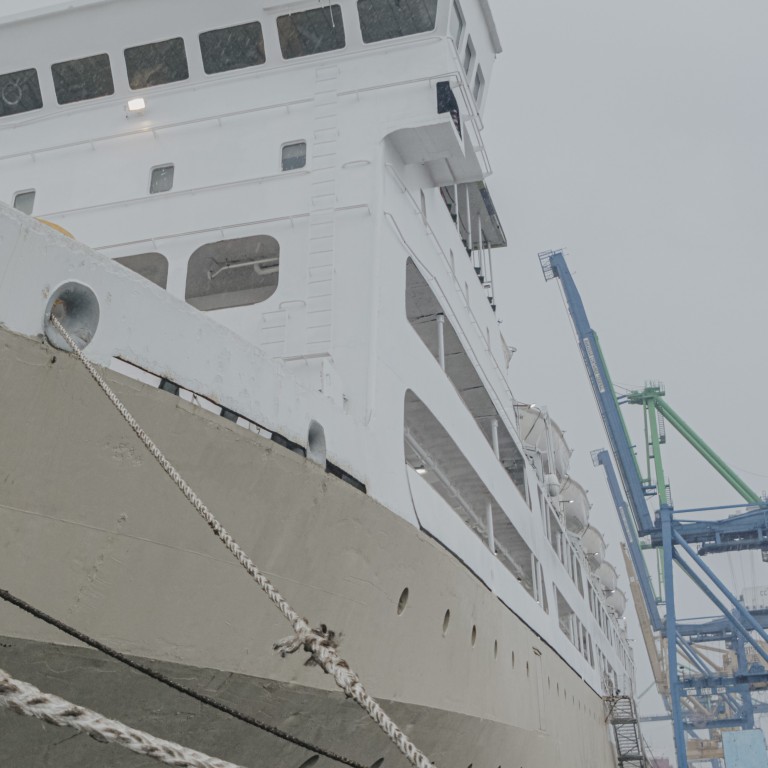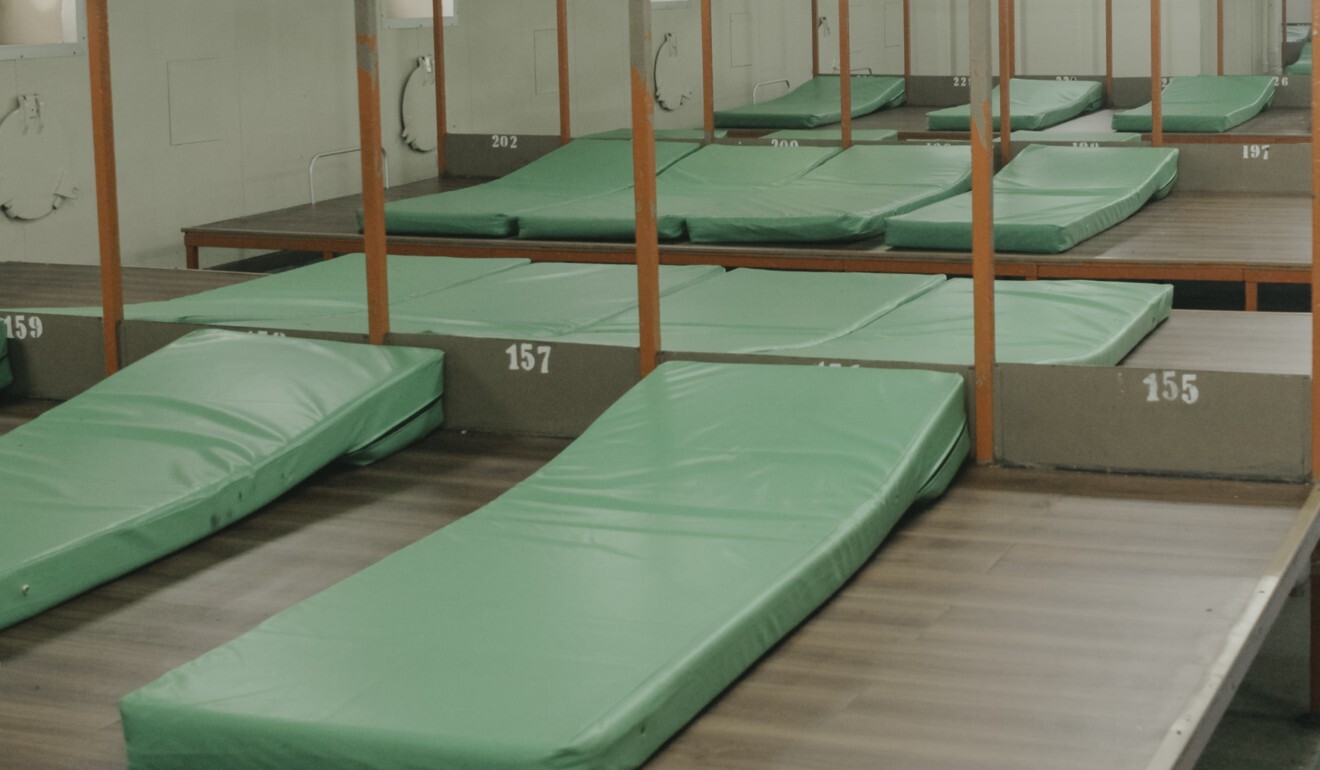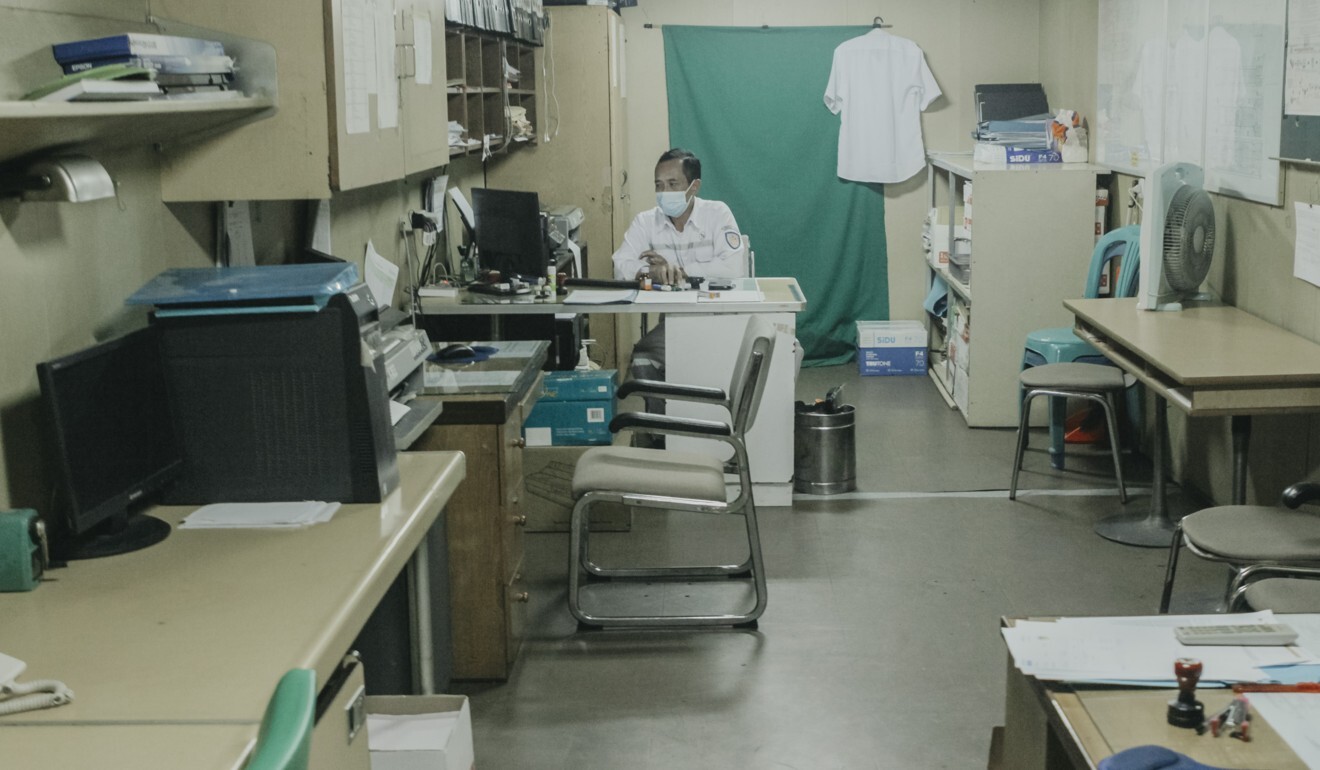
Indonesia’s Makassar unveils coronavirus isolation facility aboard passenger ship Umsini
- As cases surge in South Sulawesi, officials are creating what some have termed a ‘plague ship’ to serve as a quarantine facility for over 800 patients
- But there are concerns given the centralised air conditioning, especially after superspreader cases such as the Diamond Princess cruise liner
Ship management officer Ramidi, who like many Indonesians only uses one name, sits in his office on the fifth deck of the Umsini, where he usually takes care of crew applying for leave or changing shifts.
“In the past, every time we finished a voyage, the entire crew would take a Covid-19 test. If there were indications that someone was infected, they would be removed from the ship and treated on land,” the 51-year-old said.
“Now, it’s the other way round. The people who test positive for the virus will board the ship. But this is a national disaster, so we have to help each other out and do what we can.”
Isolating patients aboard the Umsini is the brainchild of the Makassar city government, and is part of a series of new measures aimed at slowing the spread of the virus that has ravaged Indonesia in recent weeks.
Indonesians help each other amid faltering trust in the government
According to Henni Handayani, the spokesperson of Makassar Recover – an initiative implemented by the city’s mayor to focus on pandemic prevention – the thought process behind using the ship is to completely disconnect Covid-19 from any possible interactions on land.
“The ship will provide a different isolation atmosphere. It will be more refreshing and comfortable,” Handayani said, although some online commenters have dubbed it the “plague ship”.
The idea of isolating people on a ship has proved controversial with medical experts as well as residents of Makassar and wider Indonesia. Since the beginning of the pandemic, ships have typically become known as superspreader locations, including the British-registered Diamond Princess cruise liner which reported at least 712 coronavirus cases and 14 deaths in February last year. It had 69 Indonesian crew members, but all tested negative for Covid-19.

The Umsini, which was built in 1984, usually carries goods and passengers from Batam in the west of Indonesia to the city of Kupang in the eastern part of the archipelago – a journey which takes a week in one direction. It is 144 metres long and 23 metres wide, has eight decks, and is usually staffed by 135 crew – although when it becomes a quarantine facility, only some of them will be retained.
“The only crew left aboard will be officers and non-commissioned officers. Around 50 people,” said Akhmad Sadikin, the general manager of Pelni Makassar, the group that owns the ship.
“The crew who stay on the ship won’t interact with patients. Food and medical staff will all come from a ground team sent by the city government. It is like Pelni owning a house and renting it to the city government of Makassar. They can do whatever they want, as long as they don’t break anything on the ship. That’s all.”
If you look at the model [on the ship] it’s not ideal
Officials will use 804 bed units on the economy class deck, which will resemble a hospital ward but will have special partitions to separate patients. Health workers will be housed in 68 other berths on the ship.
While the rationale of isolating patients all in one place may seem sensible on paper, the authorities are facing a number of logistical challenges, such traffic flow on board and ventilation. The economy deck uses centralised air conditioning, prompting fears about whether it will be possible for passengers to get better if the virus is potentially permanently circulating.

Concerns
According to Dicky Budiman, an Indonesian epidemiologist at Griffith University in Australia, the concept of isolation should mean keeping patients separate and in separate rooms. “If you look at the model [on the ship] it’s not ideal.”
Budiman added that the most important part of the ship isolation would be the initial risk analysis, sorting patients with mild and moderate symptoms, and those who do not have comorbidities.
“There must be regular monitoring, because isolation on a ship can become crowded and congested. Other considerations are social issues and psychosocial support that may be needed aboard,” he said.
“Meanwhile, using centralised air conditioning is dangerous unless the cooling system also uses a HEPA filter. If it doesn’t, then it shouldn’t be used. Windows must be kept open and fans also used, so it becomes even more complicated because the virus can be everywhere.”
Southeast Asia’s Covid-19 deaths skyrocket as Delta variant engulfs region
While some may have their reservations about the scheme, others believe that a floating isolation facility is not a bad idea.
Ansariadi, an epidemiologist at the faculty of public health at Hasanuddin University in Makassar, said that centralising isolation in one place would be an effective way of controlling the movement and interactions of patients with local residents. “It’s just the technicalities that still need to be ironed out. The true success of isolation is how quickly patients are found and isolated.”
The head of the South Sulawesi Covid-19 Task Force team, Ridwan Amiruddin, said the isolation facility is justified as Indonesia is entering an “extreme phase of Covid-19 pandemic handling”.
“In a worst-case scenario, Indonesia could see over 200,000 deaths reported by early October 2021 and deaths may reach a peak at over 2,000 per day by mid-August,” he added.

‘Covid Hunters’
The facts on the ground in South Sulawesi also point to an increasingly grim situation. The province has recorded more than 70,000 coronavirus cases and 1,000 deaths in recent weeks, with over 700 new infections per day. In the provincial capital Makassar, there are more than 2,300 active cases.
“The work pattern for controlling the growth of new cases must be to use contact tracing,” Ridwan said. “But the tracing rate in South Sulawesi is still very low at 1:3 while the World Health Organization (WHO) recommends a ratio of 1:30.”
According to Ridwan, South Sulawesi is now looking to stem rising cases using a two-pronged approach: mundane measures such masks and mass vaccinations, coupled with more experimental practices such as procuring the Umsini and sending out teams named “Covid Hunters” to do spot checks on residents.
Epidemiologist Ansariadi said that even if Covid-19 cases began to drop in the hotspot of Java, other parts of the country might continue to see cases increase if there was a continued lack of firm measures in place.
While emergency restrictions such as shutting malls and non-essential businesses have been enacted across some parts of Indonesia, Ansariadi lamented that the imposition of curfews and other social restrictions have so far not been strictly adhered to in many places, which is why drastic isolation action is now called for if other islands want to escape Java’s fate.
As a result, many in Makassar have put their hopes in the Umsini and all who may isolate in her.


